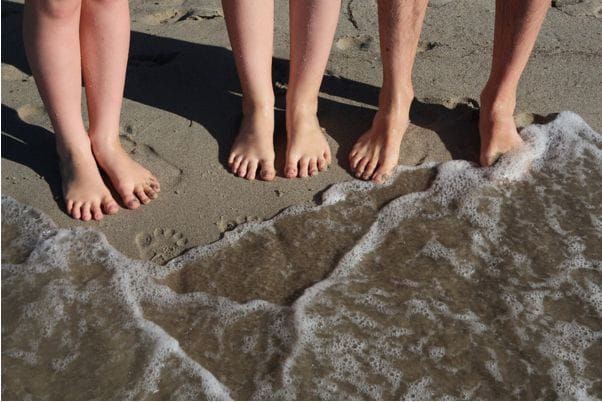Thinking about saying “I do” in Italy? You’re not alone. From the Alps to Apulia, the country is a patchwork of dreamy backdrops. But when couples (and planners) rank the best regions for a destination wedding, Tuscany keeps ending up at the top. There’s a reason — actually several — why this saffron-hued corner of central Italy steals hearts and, quite often, the whole show.

Why Italy works for destination weddings
- Ease of access: Two international hubs (Florence and Pisa) plus fast train links from Rome and Milan. Your guests won’t need three layovers and a prayer.
- Reliable vendors: Italy’s wedding industry is mature, creative, and multilingual. You’ll find planners, celebrants, photographers, florists and caterers used to destination briefs.
- Scenery density: Mountains, vineyards, medieval towns, coastline — often within 2 hours of each other.
- Food & wine: If your wedding memories live on one thing, make it shared plates under olive trees and Chianti in proper glassware, not plastic.
Why Tuscany, specifically?
- The look you’re imagining
Sun-washed farmhouses, cypress-lined lanes, golden hills (the Val d’Orcia truly glows), stone borgos and frescoed salons. Tuscany is basically a Pinterest board that learned to speak Italian. - Venue variety
- Vineyards and agriturismi for rustic-elegant dinners under fairy lights.
- Castles and historic villas with frescoes, loggias, and views that seem CGI’d.
- City-chic palazzi in Florence, Siena, or Lucca for black-tie minimalism.
- Coastal escapes on the Etruscan Coast or Elba Island if you want sea breezes with your spritz.
- Guest experience that plans itself
Truffle hunts in autumn, hot springs near Montecatini, Uffizi and Duomo in Florence, biking the Lucca walls, wine tasting in Chianti… it’s easy to turn your wedding into a mini-holiday for everyone. - Golden hour & weather
Spring and late summer deliver gentle light, warm evenings, and long civil-ceremony windows. July–August can be hot inland but ideal for late starts; May, June, September are basically perfect.
That is why so many couples choose to work with experienced local professionals like Emozioni Wedding, a team of Tuscany-based wedding planners who specialize in creating smooth, elegant, and unforgettable celebrations.
Best time of year (and what it feels like)
- April–May: Fresh greens, wildflowers, shoulder-season rates. Occasional showers, so have a plan B for alfresco dinners.
- June: Peak roses, long evenings, high demand. Book early.
- July–August: Hot inland (35°C+ possible), but spectacular late-night outdoor parties; coastal or hilltop venues are cooler.
- September–early October: Harvest vibes, mellow sun, excellent produce; arguably Tuscany at it’s best.
- Late Oct–March: Cozy fireplaces, lower venue fees, candlelit palazzo dinners. Fewer blooms, more atmosphere.
Ceremony types & paperwork (short and clear)
You can marry in Tuscany three main ways:
- Civil ceremony (legally binding)
Takes place in a town hall or at approved venues (some villas are licensed). Documents depend on nationality; for many couples it’s a Nulla Osta (certificate of no impediment), passports, and translations with apostilles. A local planner or interpreter is legally required in some municipalities. - Religious ceremony
- Catholic: Requires baptism/confirmation certificates and diocesan permissions, plus coordination with the local parish and civil paperwork.
- Other faiths: Many are possible, but check recognition and local rules in advance.
- Symbolic ceremony
No legal paperwork; craft the script you want, anywhere you like (vine rows, villa lawn, olive grove). Many couples do the legal part at home, then celebrate freely in Tuscany. Honestly, it’s the least stressful route.
Timeline tip: Start document checks 6–8 months out. Italian municipal offices are helpful but not fast. It’s better to over-prepare than to sprint.
What it costs (ballparks to budget with)
Costs vary wildly by guest count, venue category, and styling, but for a 60–80 guest wedding:
- Venue hire (private villa/castello): €6,000–€18,000 (often includes two nights of on-site rooms).
- Full-service planner: 10–15% of total budget (or €4,000–€12,000 fixed).
- Catering (aperitivo + dinner + open bar): €120–€220 per person.
- Florals & décor: €3,000–€10,000+ (tablescapes and chuppahs/arches swing this).
- Photography/Videography: €2,500–€7,000 each.
- Music (DJ or small band): €1,200–€5,000+.
- Transport (guest shuttles): €800–€2,500.
- Celebrant/interpreter: €300–€1,000.
- Misc. (paper goods, beauty, lighting, rentals): €2,000–€8,000.
Smart save: A welcome pizza night at the villa often costs 40–60% less than a formal rehearsal dinner and is ten times more fun.
Where to plant the flag (micro-guides)
- Chianti Classico (Greve, Gaiole, Radda): Quintessential vineyards, easy Florence access, picture-perfect stone hamlets.
- Val d’Orcia (Pienza, Montalcino, San Quirico): Cinematic hills, thermal spas, Brunello wine culture. Slightly longer transfers, unbeatable views.
- Florence city: Artistic grandeur, licensed palazzi, convenient for 2–3 day wedding weekends with gallery tours.
- Lucca & Garfagnana: Flat, bike-friendly Lucca for relaxed elegance; the hills above offer forests and cool nights.
- Tuscan Coast & Islands (Bolgheri, Castiglione, Elba): Sea + cypress + wine; ideal for summer ceremonies and sunset aperitivo.
A three-day Tuscan wedding weekend (sample)
Day 1 – Benvenuto!
- Afternoon check-ins at the villa
- Sunset pizza party with local beers and Tuscan folk trio
- Early night? Maybe. Probably not.
Day 2 – The Wedding
- Slow morning; hair & makeup with espresso bar
- 5:30 pm ceremony (golden hour) in the olive grove
- Aperitivo with live sax + spritz
- Family-style dinner under string lights
- Millefoglie cake show, then DJ ’til 1:00 am (or later if venue allows)
Day 3 – Recovery & Goodbyes
- Poolside brunch featuring schiacciata and pecorino
- Optional wine tasting or truffle walk
- Farewells and shuttles to Florence/Pisa
Logistics most couples overlook
- Sound curfews: Many rural venues have 11:30 pm–1:00 am limits outdoors. Ask about indoor after-party rooms if you want to push later.
- Plan B for weather: A marquee or a hall with equal charm (not a sad conference room). Your guests should feel you meant to do it this way.
- Transport: Narrow roads and limited parking — hire shuttles and publish pick-up times on the welcome card and WhatsApp group.
- Power & lighting: Bands, festoons, and catering stations need dedicated circuits; generator rentals are common and not expensive.
- Accessibility: Medieval steps and gravel courtyards aren’t friendly for all. Ask venues about ramps and accessible restrooms.
- Pool safety: If you’re hosting in a villa with a pool, consider lifeguard hours during parties. Boring but important.
Styling that feels Tuscany, not theme-park
- Palette: Sage, stone, terracotta, soft cream. Let the countryside set the tones; don’t fight it.
- Materials: Linen runners, olive-leaf accents, hand-tied herbs, tapered candles in mixed brass.
- Place cards: Simple deckle-edge paper or local ceramic tags your guests can pocket.
- Favour idea: Tiny bottle of local olive oil or a custom biscotti bag. Avoid heavy stuff — guests are flying.
Menu ideas guests still talk about next year
- Aperitivo stations: Tuscan salumi and pecorino, pappa al pomodoro shots, fried sage leaves, cecina (chickpea flatbread).
- Firsts: Handmade pici with ragù or cacio e pepe; truffle tagliatelle if in season.
- Secondi: Bistecca alla fiorentina to share, or salt-baked sea bass on the coast.
- Dolci: Millefoglie built live, cantucci with Vin Santo.
- Late-night bite: Porchetta panini or mini arancini — keeps the dancefloor alive and the prosecco friendly.
Planner or no planner?
If your guest count is 40+ or you’re going legal in Italy, hire one. A local planner navigates municipal offices, curfews, vendor contracts, and those tiny rural roads where the bus driver swears they definitely can turn around (he can’t). For micro-weddings with a symbolic ceremony, a month-of coordinator might be enough, but you’ll still want an Italian-speaking point person on the day.
Timeline you can trust (count back from your date)
- 12–14 months: Secure venue and planner; hold a back-up date if you can.
- 9–12 months: Book photographer/video, caterer, band/DJ; start paperwork if going civil or religious.
- 6–9 months: Send invites with travel tips; reserve guest rooms/blocks and shuttles; lock your rain plan.
- 3–6 months: Tastings, floral brief, lighting layout, ceremony script; confirm power needs.
- 1–2 months: Seating plan, final menu, transport schedule; nudge RSVPs (there’s always a few late ones).
- Wedding week: Legal appointments (if required), rehearsal, welcome night, breathe.
Common mistakes (and easy fixes)
- Starting too early in peak summer. Aim for 5:30–6:30 pm ceremonies; your older relatives will thank you.
- Under-budgeting lighting. Tuscany looks magical after dark when you invest in candles and string lights.
- Skipping transport. Don’t let guests self-drive on unfamiliar rural roads at night.
- Over-styling. Let the venue shine; choose one or two “wow” moments, not five. There’s less is more here.
Quick FAQ
Can we have a legal ceremony at our villa?
Sometimes. Only certain venues are licensed; your planner can help secure a civil officiant or arrange a town-hall ceremony plus symbolic vows on-site.
Is August a bad idea?
Not if you plan for it: later timeline, shaded ceremony, hand-fans, cold towels, gelato cart. Coastal or hilltop venues help a LOT.
How far in advance should we book?
Prime Saturdays in June/September can go 12–18 months out. If you’re flexible on weekday dates, you’ll find more options (and often better pricing).
Are there noise restrictions?
Yes, many. Confirm outdoor/indoor cut-offs in your contract and plan the after-party accordingly.
Final word
Italy is full of extraordinary places to marry, but Tuscany has an almost unfair combination of looks, logistics, and lived-in romance. It’s the rare region where your ceremony backdrop, your menu, and your guest weekend all feel effortlessly aligned. Plan with intention, respect the local rhythms, and remember: you’re not throwing a show — you’re hosting a beautiful meal and moment for the people you love. The rest takes care of itself, mostly.




